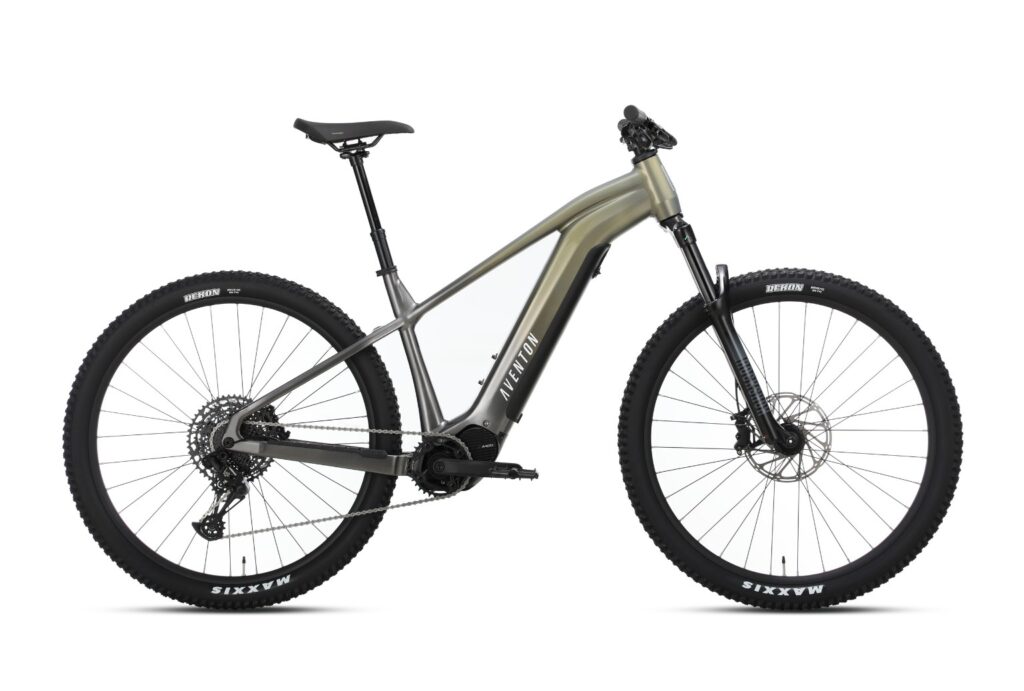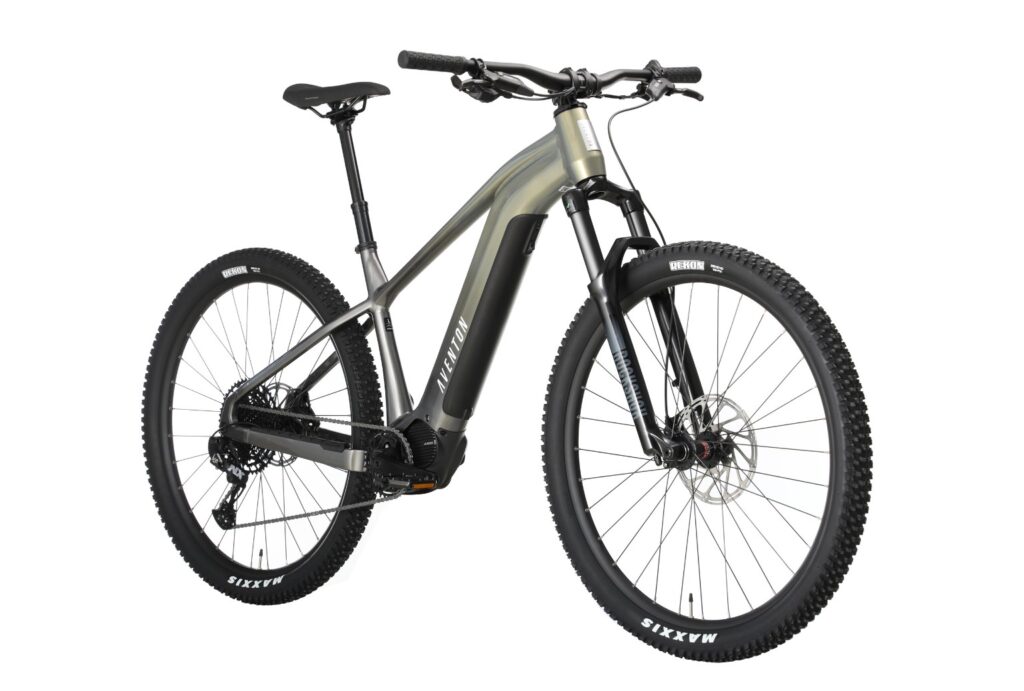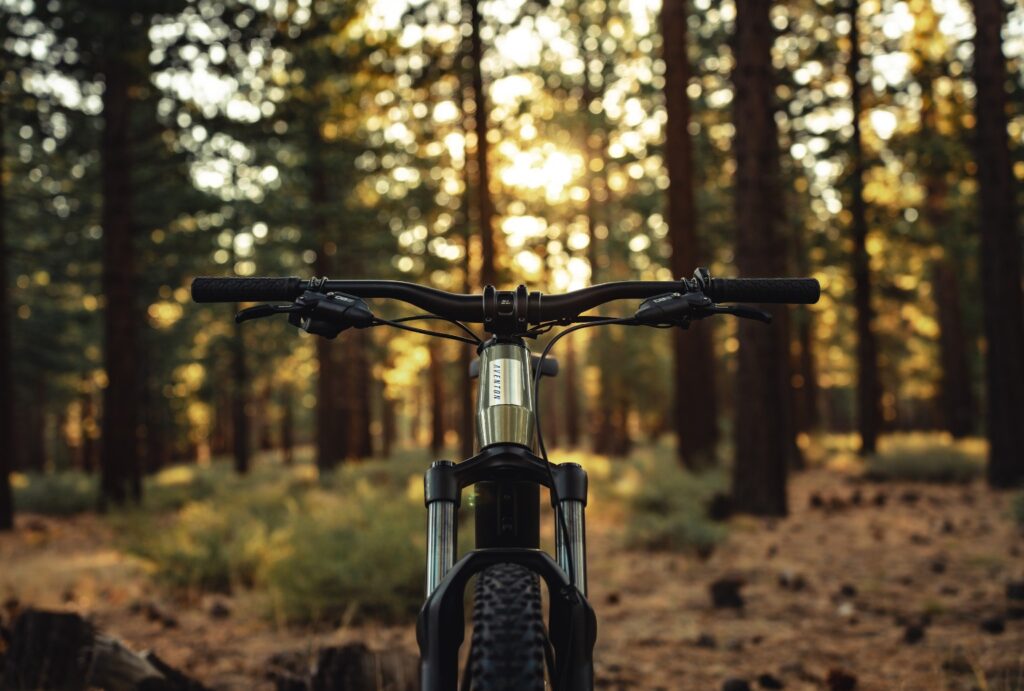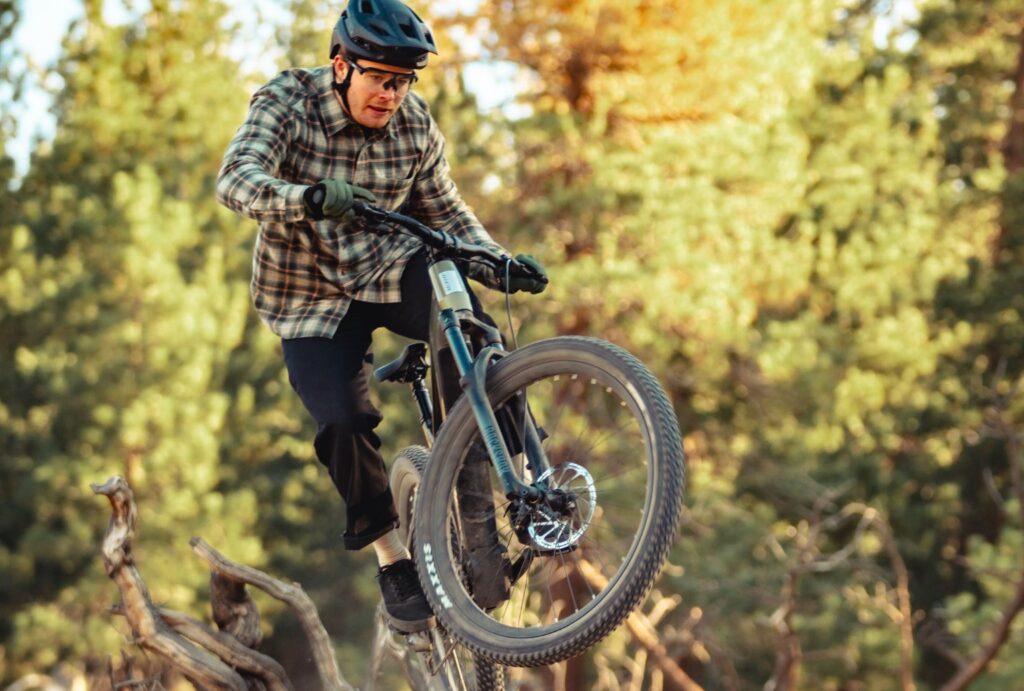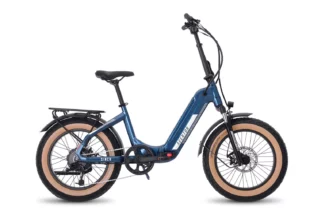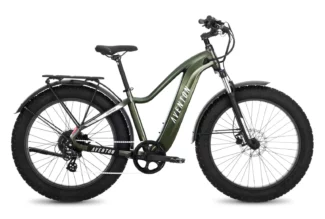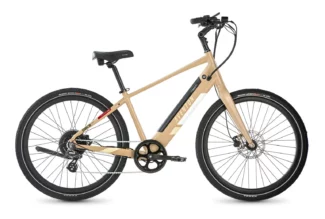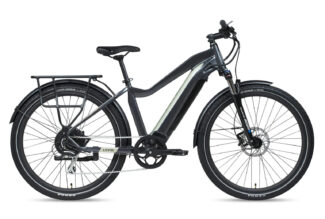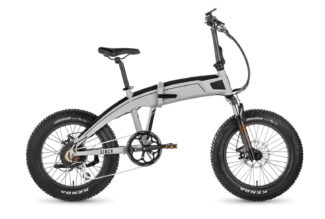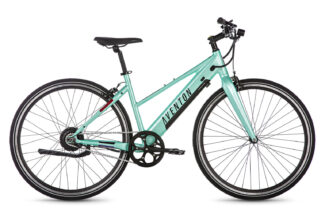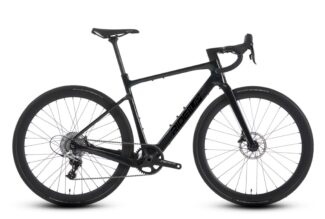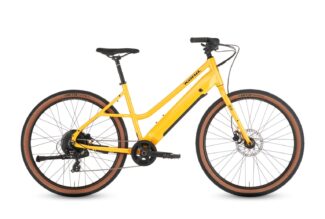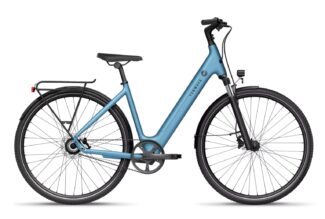Shipping and Assembly
First, I must commend Aventon for its continued use of recyclable cardboard packaging. The Ramblas seemed to have even less packing material than usual, so points for eco-friendly delivery.
The Ramblas arrived mostly assembled in a typical cardboard bike box. Pieces that usually come attached to Aventon e-bikes, like the reflectors, headlight, and kickstand, were included but not installed. Given the new MTB market, this decision makes sense and allows the user to equip the bike as needed. I left them off during the assembly process, except for the small, well-designed headlight.
The model I received — XL size — also came with the seat unattached, so everything would fit in the box. That gave me the extra step of connecting the saddle to the dropper post, but all other sizes would arrive with the seat installed.

Despite the bike coming mostly assembled, it took me the better part of 90 minutes to put it together. I’ve assembled many e-bikes, and this one took almost twice as long as usual. That said, Aventon provides extensive video instruction via a QR code on the manual’s cover.
The most time-consuming steps included the front wheel installation, dropper post connection, and seat installation. They fall more on the more technical side, even with professional tools.
Aventon includes a decent multi-tool in the box for DIYers. However, if you have little or no experience building a bicycle or are admittedly not handy with the needed tools, we strongly suggest getting some support. You can enlist an experienced helper or pay a bike shop to get the Ramblas safely up and running.
Apps and Connectivity

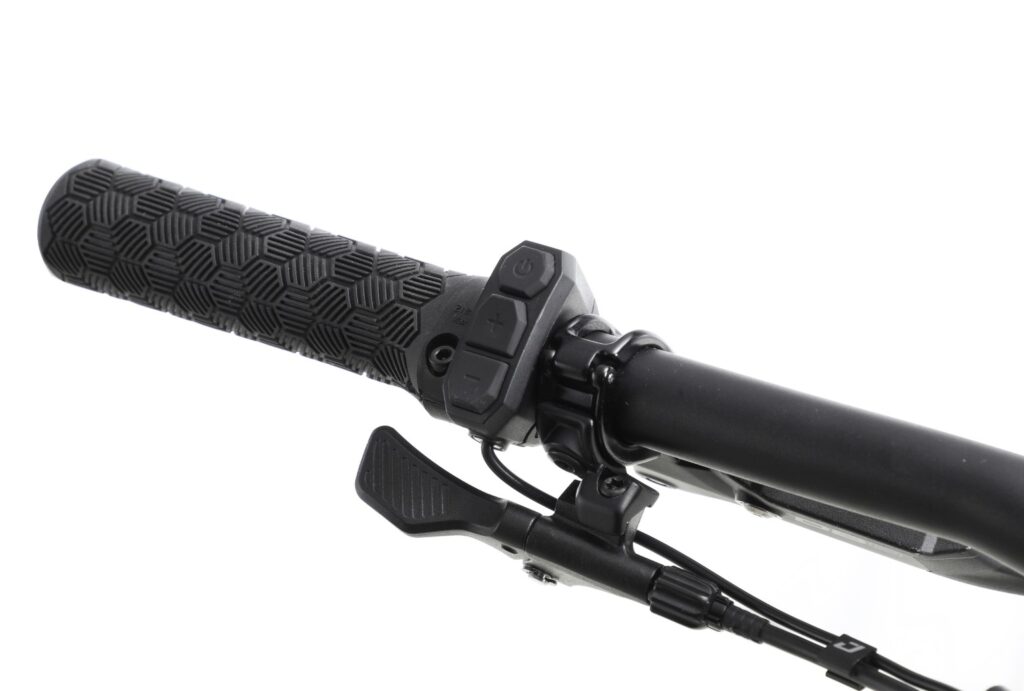
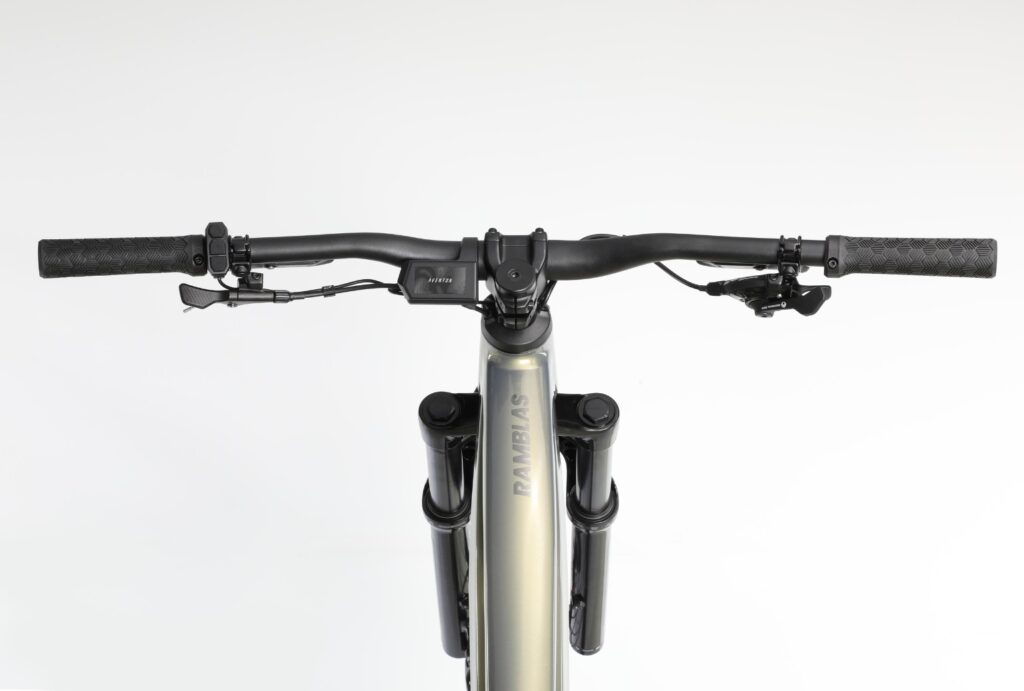
Like most Aventon e-bikes, the Ramblas includes Bluetooth connectivity to the Aventon app. However, there are some extra perks like Ride Tune. This feature allows Ramblas riders to tweak the performance in every ride mode by adjusting assistance level, maximum torque output, and acceleration metrics.
You can save your settings changes to the cloud for easy transfer to a new phone — or simply reset the bike to factory defaults. The application also records ride data, shows battery levels, and automatically adjusts lighting to turn on or off in certain conditions.
How the Aventon Ramblas Performed
Eager to test the Aventon Ramblas’ off-road prowess, I headed for a nearby small mountain biking and BMX facility. The long ride through the city to get there provided ample opportunity to also check out the Ramblas’ talents on pavement and crumbling infrastructure.
Performance: Urban Overview
I pumped the tires up to 40 psi and set the assist mode at Eco, and the Ramblas rode beautifully. It felt confident and controlled on the pavement, fairly whistling down the road at 20 mph — even slightly faster on some light downhill bits as the assist trailed off.
While designed for heavier e-bikes, the RockShox 35 Silver TK performed well and allowed for some urban stunts. Lofting off curbs, bunny hopping up other curbs, and getting a bit of air off driveway rises increased the fun factor of riding through the city.
I quickly felt the bike’s heavier weight when it headed back down to earth. Still, it was far more precise, responsive, and fun to ride than Aventon’s more commuter-focused models.
Performance: Off-Road Overview
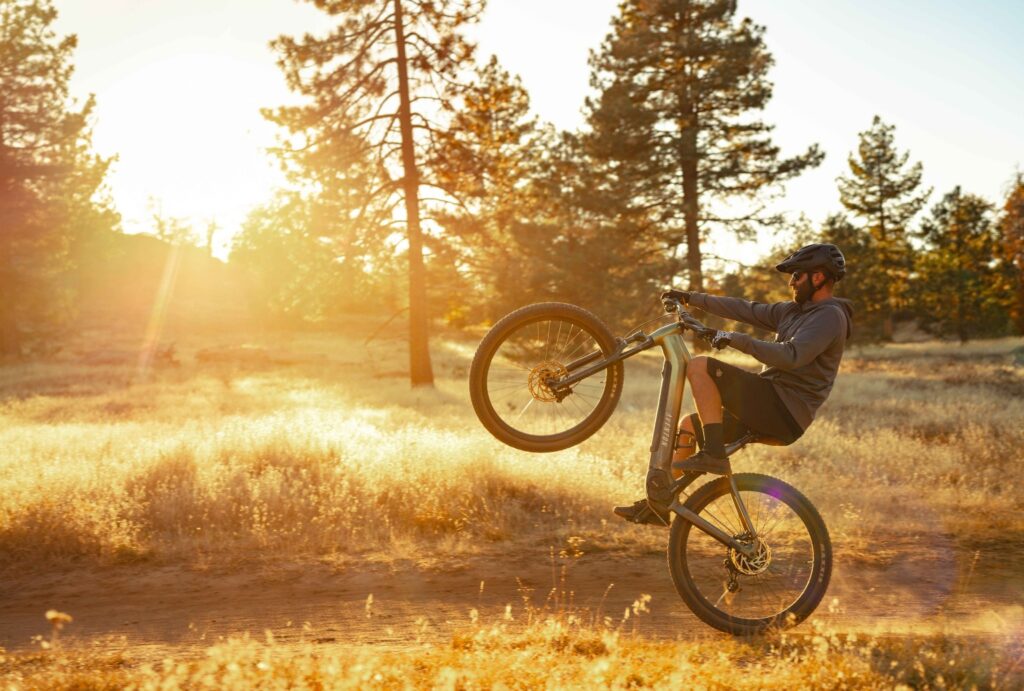
At the off-road facility, I aired down the tires to about 27 psi and railed the Ramblas through numerous challenges, including winding forest singletrack, downhill freeride sections, and even a pump and stunt track. While I hesitate to call it a scalpel, it’s certainly a sharp enough tool for most riders who like to get in some off-road riding fun.
I also got to test the Ramblas on some less-than-ideal terrain on the ride home. One particular road had bits of mud, gravel and even a sheen of moss in spots, which can be slippery. The pavement ranged from smooth to pock-marked, with shallow potholes and sharp creases.
These different riding environments let the Ramblas show off its diverse capabilities.
Performance: Pedal Assist Modes and the Motor


Whoever tuned Aventon’s motor and assist profiles did their homework. The factory default settings felt the best — especially compared to when I tried to fuss with the motor and assist profiles in the app. In particular, the Trail setting felt spot-on for almost any situation, with smooth engagement and noticeable — but not overwhelming — assistance.
Switching the motor assist to Trail mode pops the torque up to 80 Nm (from 60 Nm in Eco mode), lowers acceleration a bit, and increases the assist to 60%. Only for the most severe climbs did I dial in Turbo’s full 100 Nm boost to conquer an incline.
While I did not expect the Aventon’s A100 motor to be a silent partner, the sound level was a bit louder than expected but far from annoying or disruptive. If anything, it gives an audible clue as to how hard it’s working. That way, you don’t have to peek at the small but sharp and colorful LCD display, which also features a graphical motor output indicator.
Performance: Dropper Post
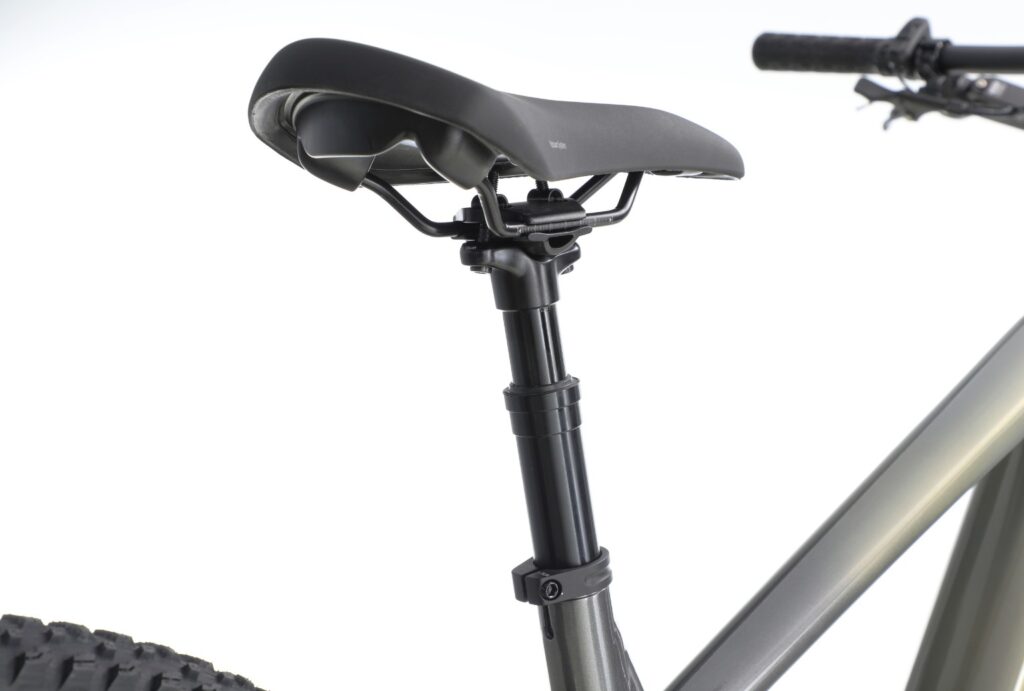
As I mentioned before, installing the dropper post and the small control lever posed quite a challenge. The lever even felt a bit loose during the rides.
Fortunately, I had stuffed the multitool in my shorts and was able to quickly tighten it. It gave no further trouble and allowed me to enjoy the sturdy KS dropper post with quick, silent action — quite a treat on an e-bike at this price point.
Performance: Hill Climb Test
The SRAM NX Eagle rear cassette dropped to granny gear as the climb began, and the motor went to Eco mode. However, I had to click up two gears as the torque (set to factory specifications) boosted the Ramblas up the long climb to between 11 and 13 miles an hour with seated but purposeful effort on the pedals.
On a steep section, I turned off the assist, dropped the KS post, and stood on the pedals for some additional cardio — and that’s when Ramblas’ weight became most apparent. However, returning to Eco mode boosted the speed, and I returned to a seated position to finish the ascent.
Considering the motor’s small size, it’s remarkably powerful and well-mannered, with smooth engagement and no slop in the pedals. It appears Aventon did the needed R&D before finalizing the production specs.
The second round up the hill, I set the motor at Turbo and gave a moderate effort pedaling, this time reaching 14-17 mph as the motor whirred along at peak power.
| Attempt # | PAS Level | Avg. Speed |
|---|---|---|
| 1 | Eco | 11 mph |
| 2 | Turbo | 16 mph |
The Ramblas’ hill test was done on a paved road about ⅚ of a mile long, with a grade varying between 6% and 10% with some short flat sections. It had an approximately 700-foot elevation gain over a trail just under a mile long.
Performance: Brake Test
The braking power on the Ramblas was excellent, with the SRAM rotors never fading or squealing during aggressive use. Feel and feedback through the lever are good, with most braking requiring only one or two fingers on the lever.
Heading down the singletrack hills at the ride park proved that the SRAM brake rotors and single-pot calipers are perfectly capable of slowing the Ramblas and rider in a controlled fashion with good feedback through the lever. I didn’t encounter any brake fade, but the riding area was not pro-level steep either.
Even on the roughest and steepest outdoor paths I rode home, the Ramblas felt secure and planted. With the SRAM cassette in top gear and pedals turning quickly, I topped 40 mph downhill before completing a sharp but banked 90-degree turn. The Ramblas railed through the turn at speed after a soft touch on the SRAM brakes, which never squealed or faded during the test rides.
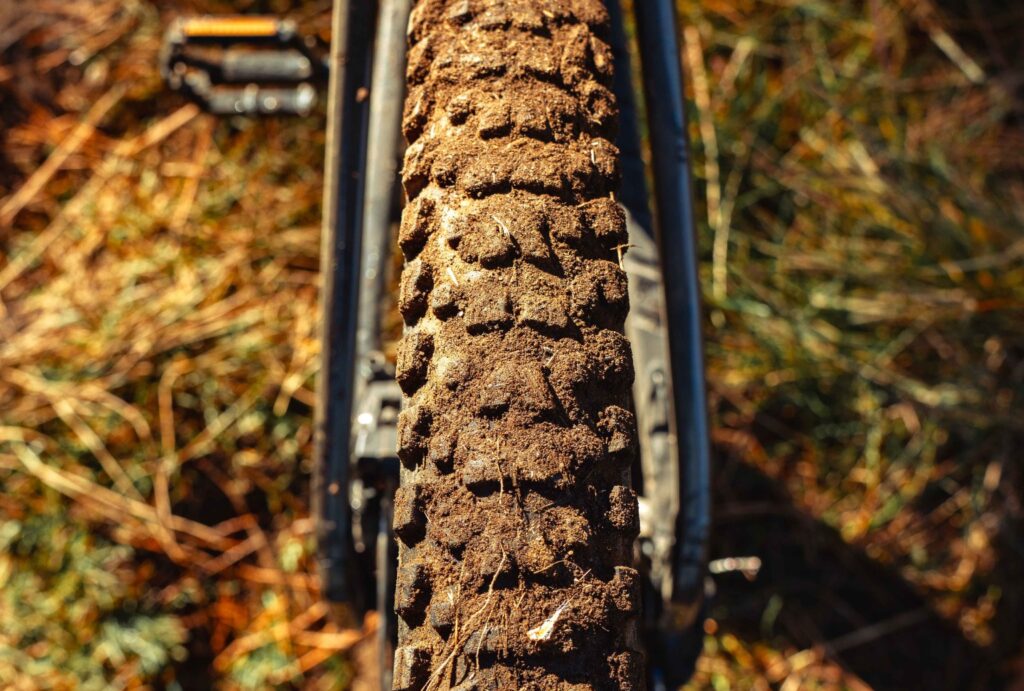

The 2.4-inch wide Maxxis Rekon tires also have a very good bite. However, they can be overwhelmed with thick mud, leading to a bit of slip until a few rotations clear some tread.
The only adjustment made to the Ramblas during the test rides was a slight handlebar rotation to allow better braking control while riding in the standover position.
Performance: Range and Battery Test
Aventon claims the range reaches 80 miles. While that seems overly optimistic, the battery did perform better than expected during my brief review period (although I did not run it to complete exhaustion). It would be fair to expect 50 miles of assist range in mixed riding, perhaps more if mostly using Eco mode.
After biking all the way to the BMX facility and starting the trek home, the battery read 60%. It dropped to 50% after the first hill test. I then rode through another hill test in Turbo mode before switching to Trail mode and turning on the head and taillights for the ride home.
After hours of mixed riding, the battery meter read 22%, an impressive display of both capacity and battery management by the Ramblas’ power management systems.
Things to Consider
For more experienced mountain bike riders looking to go electric, the Aventon Ramblas may underwhelm — especially considering the broad offerings currently available. Yes, it includes some clear upgrades from Aventon’s more utilitarian rigs, but even the SRAM bits and RockShox 35 fork may not meet experienced off-road cyclists’ expectations.
Another potential issue is the weight. Aventon prioritized strength and durability, so the Ramblas totals nearly 60 pounds. It may not be a dealbreaker, but it’s certainly something to keep in mind.
On top of that, there are a few details that could use some improvements. The plastic battery cover, for example, feels cheap and unlatches perhaps a bit too easily. That said, it stayed in place during the aggressive ride.

